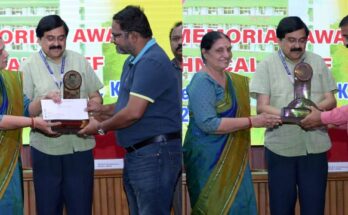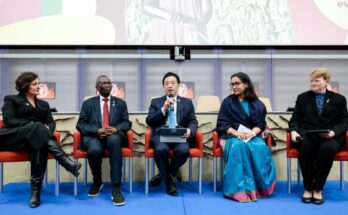Hyderabad, India: A collaboration between the International Crops Research Institute for the Semi-Arid Tropics (ICRISAT) and Corteva Agriscience has yielded three ‘platinum-standard’ genome sequences for pearl millet varieties, providing valuable insights into the crop’s genetic composition.
The study, published in Nature’s Communications Biology, paves the way for the development of more climate-resilient and nutritionally enhanced crops. Pearl millet, a climate-resilient grain, serves as a lifeline to over 90 million people in South Asia and sub-Saharan Africa.
Its remarkable ability to endure scorching temperatures, prolonged droughts, and nutrient-deprived soils, sets pearl millet apart as a top solution to bolstering global food and nutritional security in the context of climate change.
Director General of ICRISAT, Dr Jacqueline Hughes commended the collaboration and said the transformative study would augment ICRISAT’s and its partners’ ability to continue progress towards the creation of crop varieties that transcend the boundaries of nutrition and climate resilience.
“The benefits of these insights are not confined to pearl millet alone; they also extend to closely related cereal crops like foxtail millet, sorghum, wheat, and rice,” said Dr Hughes.
You may also like to read – Agricultural Science Congress: Rupala calls for innovations to foster sustainable agri-food systems
ICRISAT’s pioneering work in developing the initial draft genome of pearl millet in 2017 laid the foundation for the current breakthrough.
Leveraging advanced technologies, scientists have meticulously pieced together the genetic puzzle, eliminating gaps in the draft genome.
High-quality genome assemblies are vital for unravelling the genetic basis of traits such as heat and drought resistance, early maturity, rapid grain development, disease resistance, and nutritional attributes, including protein, iron, and zinc levels.
“This study will aid researchers in fast-tracking the development of climate-smart crop varieties for the benefit of smallholder farmers in developing nations,” said Professor Rajeev Varshney, Director of the Centre for Crop & Food Innovation at Murdoch University, Australia.
Dr Raman Babu, Research Director, Digital Agriculture for Asia-Pacific, Corteva Agriscience said that armed with new levels of accuracy regarding the intricacies of the pearl millet genome, scientists are now equipped to design and implement innovative breeding strategies to enhance both nutrition and resilience, paving the way for the development of superior pearl millet cultivars.
You may also like to read – Higher academic institutions agree on forming India’s first HEIs-led Agri-Consortium
“This development truly marks a watershed moment in the history of the ICRISAT-Corteva partnership and exemplifies how impactful results can be achieved when partners with complementary strengths come together to solve complex scientific challenges,” added Dr Babu.
The comparative genome analysis presented in the study serves as a valuable tool for future genome editing applications in pearl millet, particularly in the identification and reintroduction of vital agricultural traits that may have been lost during domestication but remain present in wild species.
“Platinum-standard genome assemblies provide a strong foundation for future pearl millet research, enabling the development of high-yielding, stress-resistant, and nutritious varieties. This, in turn, advances food production, and livelihoods, and helps combat climate change in regions where pearl millet is a staple crop,” said, Dr Rakesh Srivastava, Principal Scientist at ICRISAT.
The detailed study also highlights that pearl millet is genetically coded to produce higher concentrations of amino acids, specifically cysteine and methionine when compared to legumes like pigeonpea and chickpea. Combining millet with legumes can create a harmonious mix of amino acids, thereby contributing to a well-balanced diet that can effectively combat malnutrition.
This study was spearheaded by Dr Rajeev Varshney, Dr Raman Babu, and Dr Rakesh Srivastava. A genome sequence is a complete and detailed blueprint of an organism’s genetic material, which is typically composed of DNA (or RNA in the case of some viruses.
Source: The story is based on an ICRISAT Press Release





